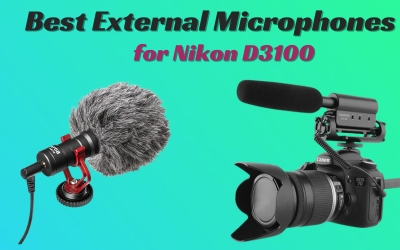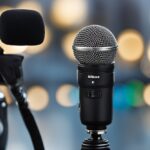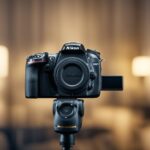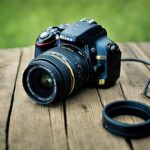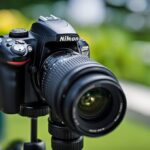Have you ever wondered if tapping a microphone can damage it? Maybe you’ve seen performers tap their microphone to check if it’s working, or you’ve been tempted to tap it yourself. While it may seem harmless, the truth is that tapping a microphone can cause damage, depending on the type of microphone and how hard you tap it.
In this article, we’ll explore the effects of tapping on a microphone and share some tips on proper microphone handling.
Key Takeaways
- Tapping a microphone can cause damage, especially for ribbon and condenser microphones.
- Proper microphone handling is essential to ensure that your microphone lasts as long as possible and produces high-quality sound.
- To avoid damaging your microphone, avoid tapping it and instead use other methods to check if it’s working properly.
Table of Contents
ToggleDoes Tapping a Microphone Damage It?
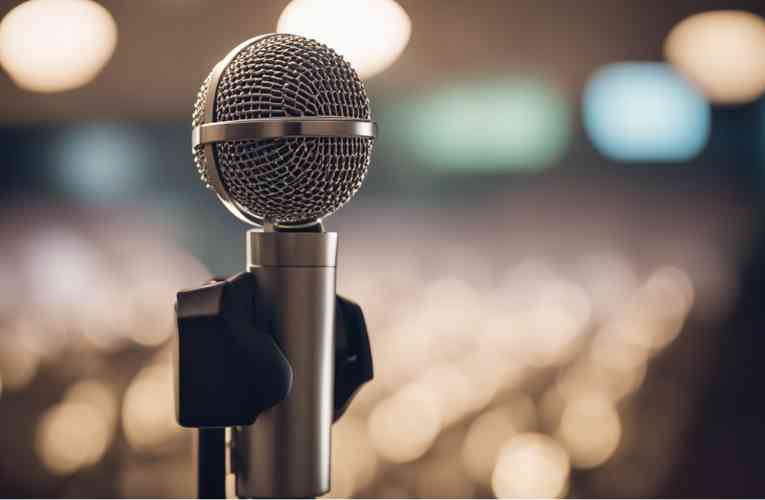
Tapping a microphone can have a few different effects on the device. In general, it is best to avoid tapping any microphone if possible. Here are a few potential outcomes of tapping a microphone.
Physical Impact on Microphone Components
Tapping a microphone can cause physical damage to the device, especially if it is a condenser or ribbon microphone. These types of microphones have delicate components that can be easily damaged by sudden impacts. Even if the microphone appears to be working fine after being tapped, there may be internal damage that affects the sound quality over time.
Potential for Sound Distortion
Tapping a microphone can also cause sound distortion, particularly if the microphone is being used to record or amplify a sound source at the time. The sudden impact of the tap can create a loud noise that overloads the microphone’s diaphragm, resulting in a distorted or clipped sound. This is especially true for microphones that are designed to capture high sound pressure levels, such as those used in live music performances or recording studios.
To avoid damaging your microphone or creating sound distortion, it is best to avoid tapping it altogether. If you need to test the microphone, speak or sing into it at a normal volume to ensure that it is working properly.
Related Posts:
- Reasons Your Condenser Mic Might Be Too Quiet
- Ensuring the longevity of condenser mics
- Solutions for condenser mic muffling issues
Proper Microphone Handling
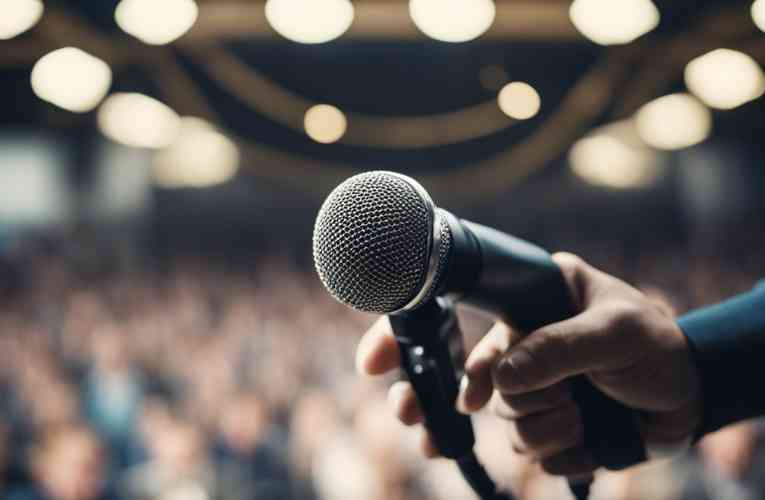
When handling a microphone, it is essential to follow certain best practices to ensure its longevity and optimal performance. In this section, we will discuss the best practices for microphone use and how to avoid common mistakes.
Best Practices for Microphone Use
- Hold the microphone correctly: Always hold the microphone by its handle and avoid touching the grille or the diaphragm. This will prevent any unwanted noise or vibration from being picked up by the microphone.
- Keep the microphone at a proper distance: Keep the microphone at a distance of 6-12 inches from your mouth to avoid any popping or hissing sounds. If you are using a condenser microphone, it is essential to keep it at a distance of 12 inches or more to prevent any damage from the air pressure.
- Use a pop filter: A pop filter is a mesh screen that is placed between the microphone and the speaker. It helps to reduce the popping sounds that occur while pronouncing certain letters such as “P” and “B.”
- Use a shock mount: A shock mount is a device that isolates the microphone from any external vibrations. It helps to reduce any unwanted noise that may be picked up by the microphone.
Avoiding Common Mistakes
- Do not tap the microphone: Tapping a microphone can cause damage to the microphone and the speaker that plays it back. It is best to avoid tapping the microphone altogether.
- Avoid screaming into the microphone: Screaming into the microphone can cause damage to the diaphragm. If you need to scream, move the microphone away from your mouth or use a dynamic microphone instead of a condenser microphone.
- Do not expose the microphone to moisture: Moisture can damage the microphone’s internal components and cause it to malfunction. Always keep the microphone dry and avoid exposing it to any moisture.
Related Posts:
- Condenser mic durability and lifespan
- Troubleshooting a faulty condenser microphone
- Ultimate guide to vocal condenser mics
Conclusion
Tapping or striking a microphone can potentially damage its internal components, functionality, and audio quality. The delicate nature of microphones requires careful handling and avoidance of any forceful impacts. Although mics can handle high levels of sound pressure, yelling or screaming into your mic will not damage or break it. However, vocal plosives can happen when a speaker or a singer pronounces certain consonants, and these air blasts can harm the diaphragms of mics.
The diaphragms of microphones cannot tolerate air blasts, such as vocal plosives. Vocal plosives can happen when a speaker or a singer pronounces certain consonants. On the other hand, that tapping on a microphone can damage speakers, but unless they are condenser or ribbon microphones, the primary threat may be to the speaker system, which can get blown by hard transients.
In conclusion, it’s essential to handle microphones with care. Avoid tapping or striking them, and be mindful of vocal plosives. By doing so, you can help ensure the longevity and functionality of your microphone.
Frequently Asked Questions
What are the potential risks of physically impacting a microphone?
Physically impacting a microphone can damage its internal components and affect its sound quality. Tapping, hitting, or blowing into a microphone can cause destructive audio transients that can harm the downstream audio equipment, especially if the microphone is a condenser or ribbon microphone.
Is it safe to blow into a microphone during a sound check?
Blowing into a microphone during a sound check is not recommended as it can cause damage to the microphone’s diaphragm and affect its sensitivity. Instead, it is better to speak or sing into the mic as you’ll be using it live.
How can mishandling a microphone affect its performance?
Mishandling a microphone can affect its performance in several ways. Dropping, hitting, or exposing the microphone to extreme temperatures or moisture can damage its internal components, leading to poor sound quality, increased noise, and reduced sensitivity.
Are there any specific microphone handling practices to avoid?
Yes, there are several microphone handling practices to avoid. You should avoid tapping, hitting, or blowing into a microphone, as well as exposing it to extreme temperatures or moisture. You should also avoid dropping or mishandling the microphone and ensure that it is properly stored when not in use.
What measures can be taken to protect a microphone from physical damage?
To protect a microphone from physical damage, you should use a shock mount or a windscreen to reduce the impact of physical vibrations and wind noise. You should also store the microphone in a protective case and avoid exposing it to extreme temperatures or moisture.
How does physical contact with the microphone’s diaphragm influence its quality?
Physical contact with the microphone’s diaphragm can damage its internal components and affect its sensitivity and sound quality. The diaphragm is a delicate component that can be easily damaged by tapping, hitting, or blowing into the microphone.

